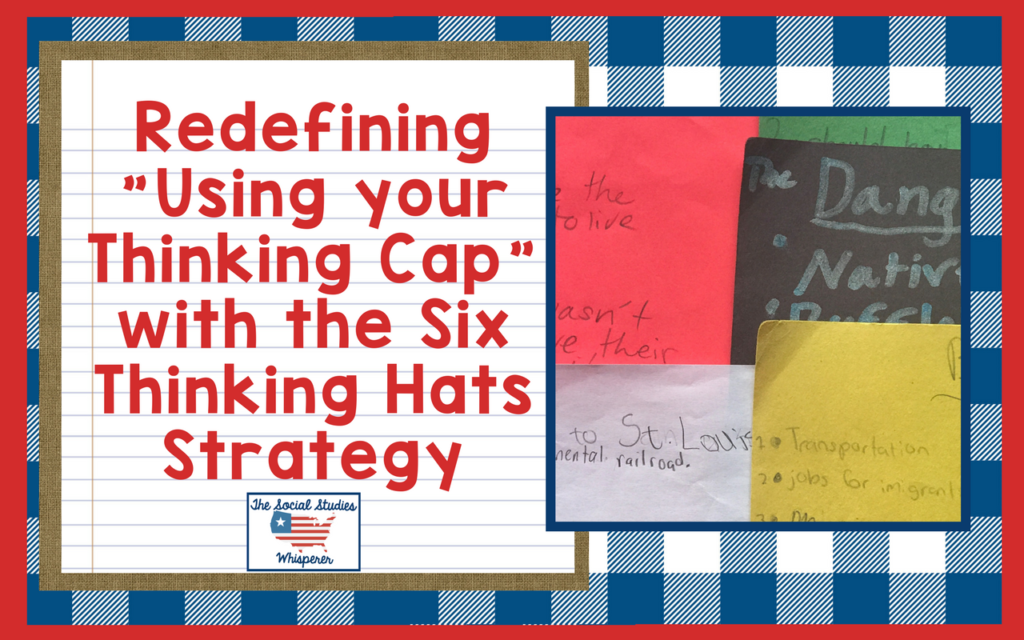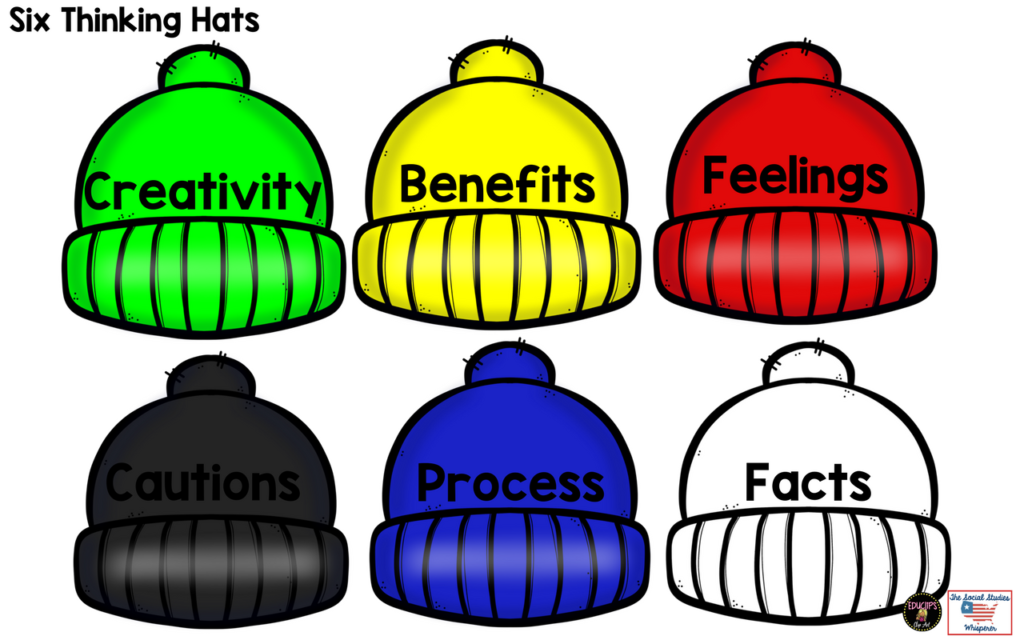
In this digitalized, data-driven age sometimes I feel that imagination is a lost art so I’m thrilled to join in with Michele from Fil-Am Teacher Mommy and some other bloggers to give teachers and homeschooling families some tips for rediscovering it! Kids aren’t going for bike rides or envisioning the woods beside their house being a nature trail because society has changed. New technology has made our lives easier and sure is fun (iPhone addict for life) but this can be problematic for our kiddos when it comes to critical thinking.
Apps and video games involve instant gratification, not that deeper thinking. I hope I am preaching to the choir right now. I hope you are saying “I know this, but what can I do?????” The answer to that is spark creativity and help kids think about things in a different way to expand their minds. Totally what “Six Hats” does. This is a strategy that would be great for homeschooling families as well as classroom teachers. It’s going to be pretty different than what you’re used to, and this post is going to give you a basic overview!
If you are new to my blog posts, I left the 5th grade classroom at the end of May 2016 to become full-time Social Studies Whisperer, champion for creativity, and advocate for kiddos who don’t fit the “norm” in public schools. I was already ESOL-certified and decided to take the Gifted Endorsement to better meet the needs of my English Language Learners who weren’t qualifying for gifted services due to language barriers. One of the first things we did was explore our own learning styles which helped us better understand the other people in the class when we completed group assignments.
I think having your kids do a learning styles inventory, multiple intelligences assessment, and any other kind interest surveys are really important. Like more than pre-assessments. This way teachers and parents can help them capitalize on their strengths and they can learn from each other like my classmates and I did! And everyone is pre-wired to view the world with their own unique lens. This can sometimes make it hard to solve a problem. This is where that meta-cognition, or thinking about thinking, comes in.
So “back in my day” as in the Goldberg era, teachers’ favorite expression (I mean besides stop talking) was “put on your thinking cap.” But then we think about things the same way every time, yet the problems differ. Kiddos know they are different and they have their own talents and gifts, but they don’t understand exactly how others view the world. Teaching them about those different perspectives can help develop empathy as well.
Six Thinking Hats is a book written by Edward DeBono and published in 1999 to help break down the thinking process. DeBono identified 6 different thought patterns which can help a person’s imagination develop in a way that will even lead to better decision-making. It’s even used by business owners and government officials. He signifies each of the “Six Hats” as a different color. See the chart below to see what each color represents and here’s a link for a full description from Mr. DeBono himself: DeBono Group Site

The way you teach this to students depends on the age and ability level of your learners. I used this with a class of high-achieving/gifted 5th graders. You can teach students the color and symbolism of 1 hat a day or start with an overview of all of them and then explore them in depth after.
This works perfectly for Social Studies or novel studies because of the prevalence of cause and effect relationships and problem/solution. You could assign the hats to groups to examine a problem or you can have students pick their favorite hat to write about and then switch to a different one. Every time after I used it and an opportunity came up I would ask students well “What if you were thinking about this with a green hat on?” etc.
When I used this it was to examine the effects of westward expansion and the building of the transcontinental railroad. I will cover the steps to the lesson in full detail in my Hip History Guidebook, which will be released in early 2018!
Make sure you sign up for the Hip History Newsletter here to stay updated: Keep me in the loop!! As a thank you, you will receive my free Lesson Hook Cheat Sheet and a 25 % off coupon for the Hip History Shop!
This is one of those strategies that I kind of thought “Huh??” about at first but once I learned about it I really like it because it helped me to make connections. The students really liked it for the most part. The ones who didn’t were the ones who had to view westward expansion from a point-of-view that was insensitive to the plight of the Native Americans. It was hard for them, but I think this is good preparation for argumentative writing or debate because they may have to use that imagination and express pros for something that normally they wouldn’t! I hope you try this strategy! I’d love to know how you used it!
Don’t forget to stop by and read the other posts!! Just click the picture! Thanks for reading!

